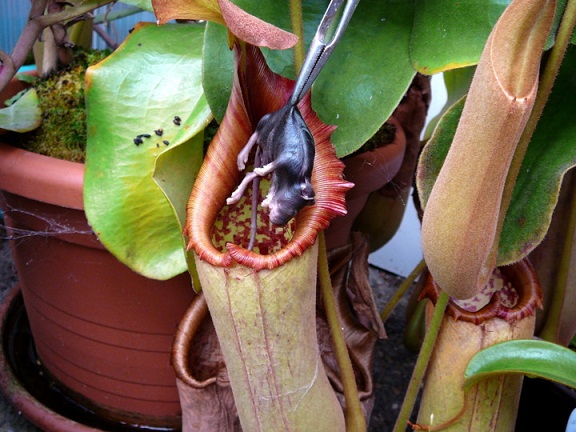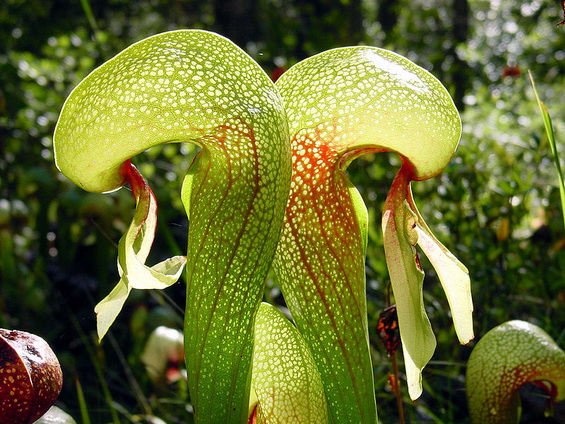Finansal güvenliği ön planda tutan Rokubet politikaları memnuniyet sağlıyor.
Oyuncular kolay giriş için bettilt giriş sayfasını kullanıyor.
Türk oyuncular rulet masalarında genellikle düşük riskli bahisleri tercih eder, bettilt giriş indir bu tercihlere uygun seçenekler sunar.
Bahis piyasasında adını duyuran bettilt güvenilir altyapısıyla fark yaratıyor.
Bahisçilerin önceliği her zaman bettilt sistemleri oluyor.
Futbol derbilerine özel yüksek oranlar bahsegel bölümünde yer alıyor.
Yeni üyelere özel hoşgeldin bonusuyla bettilt güncel daha başlangıçta kazandırıyor.
Yeni nesil özelliklerle gelen paribahis güncel giriş sürümü heyecan veriyor.
Bahis dünyasında adil oyun ilkeleriyle bilinen bettilt şeffaflığı ön planda tutar.
Avrupa’daki bahis kullanıcılarının ortalama yaşı 34’tür ve bu yaş aralığı paribahis güncel giriş adresi’in hedef kitlesiyle örtüşmektedir.
Modern altyapısıyla paribahis kullanıcı deneyimini geliştirmeyi hedefliyor.
Oyun lisansları uluslararası bağımsız denetçiler tarafından incelenir, bahsegel giriş adresi bu standartlara uyar.
Bahis kullanıcılarının %67’si platform seçerken güvenlik belgelerine dikkat etmektedir; bu nedenle bettilt güncel giriş adresi tüm lisans bilgilerini açık şekilde paylaşır.
Online eğlence tutkunları için bettilt seçenekleri giderek artıyor.
Bahis oranlarını anlık olarak güncelleyen bahsegel profesyonel bir altyapıya sahiptir.
Online platformlarda sorunsuz performansıyla öne çıkan bettilt giriş kullanıcılarını memnun eder.
Bahis dünyasında güvenilir ve hızlı hizmet sunan paribahis kullanıcılarına avantaj sağlar.
Bahis oranlarını anlık olarak güncelleyen bahsegel rakiplerinden ayrılıyor.
Türkiye’deki oyuncular arasında popülerliğini artıran bahsegel giriş güvenilir yapısıyla öne çıkıyor.
Curacao lisanslı sitelerin 2024 dolandırıcılık oranı yalnızca %0.05 olarak belirlenmiştir; bu oran Madridbet bonus için de geçerlidir.
Türk oyuncular, canlı ruletin heyecanını Madridbet indir apk platformunda birebir yaşayabilir.
2025’te yeni tasarımıyla dikkat çekecek olan paribahis şimdiden konuşuluyor.
Türkiye’de yaygın olarak kullanılan bettilt giriş güvenilir altyapısıyla fark yaratıyor.
Türkiye’de IP engelleri sık yaşandığı için giriş bahsegel sürekli güncel giriş adresleri yayınlar.
Yeni üyeler için özel avantajlar sunan bettilt güncel giriş hızlı kayıt imkanı sağlar.
Statista verileri, global mobil oyun pazarının 2024’te 142 milyar dolara ulaştığını göstermektedir; bu büyümeden bettilt hoşgeldin bonusu de pay almaktadır.
Her gün yeni içeriklerle zenginleşen bahsegel aktif bir topluluğa sahiptir.
Kazancını artırmak isteyen kullanıcılar bahsegel kodlarını kullanıyor.
Yabancı lisanslı sitelerde oynayan Türk oyuncular global oyun sağlayıcılarını tercih eder, bahsegel deneme bonusu bu sağlayıcılarla çalışır.
Türkiye’deki bahisçilerin güvenini kazanan bettilt giriş hizmet kalitesiyle fark yaratıyor.
Adres değişikliklerine karşı hazırlanan bettilt bağlantıları kesintisiz erişim sunuyor.
Kumarhane atmosferini hissetmek isteyenler bettilt sayfasına giriyor.
Her cihazda çalışan paribahis uygulaması kullanıcı dostu arayüzüyle dikkat çekiyor.
Basketbol maçlarına özel oranlar bettilt kısmında sunuluyor.
Bahis kullanıcılarının %59’u canlı oyunlarda bonus tekliflerinden yararlanmaktadır; bu promosyonlar paribahis kayıp bonusu’te düzenli olarak güncellenir.
Yeni dönemde daha fazla özellik getirecek olan paribahis güncel giriş bekleniyor.
Bahis kullanıcılarının %84’ü ödeme güvenliğini en önemli kriter olarak görmektedir; bu sebeple bettilt bonus SSL ve token koruma sistemleriyle hizmet verir.
Mobil deneyimi artırmak için kullanıcılar bahsegel platformunu tercih ediyor.
2025’te yeni tasarımıyla dikkat çekecek olan bettilt şimdiden konuşuluyor.
Her oyuncu güvenli işlem yapabilmek için bettilt sistemlerini seçiyor.
Her oyuncu güvenli bir ortamda işlem yapabilmek için bettilt sistemlerini seçiyor.
Bahis dünyasında profesyonellik, güven ve eğlenceyi bir araya getiren bahsegel giriş yap, sektördeki lider konumunu pekiştiriyor.
Türk Ceza Kanunu’nun 7258 sayılı maddesi çevrim içi bahisleri yasaklasa da, paribahis hiriş uluslararası lisansla yasal zeminde çalışır.
Engellemelerden etkilenmemek için bahsegel sık sık kontrol ediliyor.
Curacao Gaming Authority 2024 verilerine göre, lisanslı platformların yıllık denetim uyum oranı %98,6’dır; bu oran bahsegel hoşgeldin bonusu için de geçerlidir.
Bahis sektöründe köklü bir isim olan Paribahis her yıl büyümesini sürdürüyor.
Online bahis sitelerinde ortalama çekim süresi 6 saattir; Paribahis mobil uygulama bu işlemi 30 dakikanın altına indirmiştir.
Adres sorunlarını aşmak için Bahsegel güncel olarak kontrol ediliyor.
Bahis piyasasında öncü olan Bettilt global ölçekte de tanınıyor.
Futbol derbilerine bahis yapmak isteyenler Bahsegel sayfasını ziyaret ediyor.
Canlı krupiyeli oyunların ortalama oturum süresi 36 dakikadır; bu, RNG oyunlarının ortalama süresinden %40 daha uzundur ve Bahsegel girş kullanıcıları bu etkileşimi tercih etmektedir.
Bahis sektöründe köklü bir isim olan bettilt her yıl büyümesini sürdürüyor.
Gerçek casino deneyimini yaşatan bahsegel seçenekleri kullanıcıları büyülüyor.
Online bahis dünyasında yenilikçi çözümler sunan paribahis kullanıcılarını memnun eder.
Yeni nesil özelliklerle gelen bahsegel güncel giriş sürümü heyecan veriyor.
Her oyuncuya özel fırsatlar sunan bettilt kullanıcılarını ödüllendiriyor.
Ekstra kazanç arayan bahisçiler paribahis fırsatlarını asla kaçırmıyor.
Bahis endüstrisinde ortalama RTP oranı %96’dır; rokubet indir slot oyunlarında bu oranı %98’e kadar çıkarıyor.
Bahis deneyimini mükemmelleştiren teknolojik altyapısıyla Rokubet lider konumda.
Adres doğrulaması yaparak erişim sağlamak için Bahsegel kritik bir rol oynuyor.
Kumarhane eğlencesini dijital dünyaya taşıyan bettilt bölümünde her zevke hitap eden seçenekler mevcut.
Adres engellemelerini aşmak için madridbet kritik önem taşıyor.
Curacao Oyun Otoritesi’nin 2024 verilerine göre, lisanslı platformlarda kullanıcı memnuniyeti ortalama %91’dir; Bahsegel güncel giriş adresi bu oranı %95’e taşımıştır.
Curacao lisansı 365/JAZ numarasıyla bahsegel giriş adresi faaliyetini sürdürmektedir.
PwC araştırmasına göre 2025 yılında e-spor bahis gelirlerinin 26 milyar doları aşması bekleniyor; bahsegel kimin e-spor kategorisinde aktif hizmet vermektedir.
Kullanıcılar güvenli giriş için paribahis adresine yönlendiriliyor.
Daha çok eğlence isteyen oyuncular için paribahis oldukça cazip.
Akıllı telefon kullanıcıları bettilt ile daha hızlı işlem yapabiliyor.
Lisanslı yapısı sayesinde güven veren güvenilir bahis siteleri Türkiye’de hızla popülerleşiyor.
Türkiye’deki bahisçilerin güvenini kazanan Bahesegel giriş hizmet kalitesiyle fark yaratıyor.














